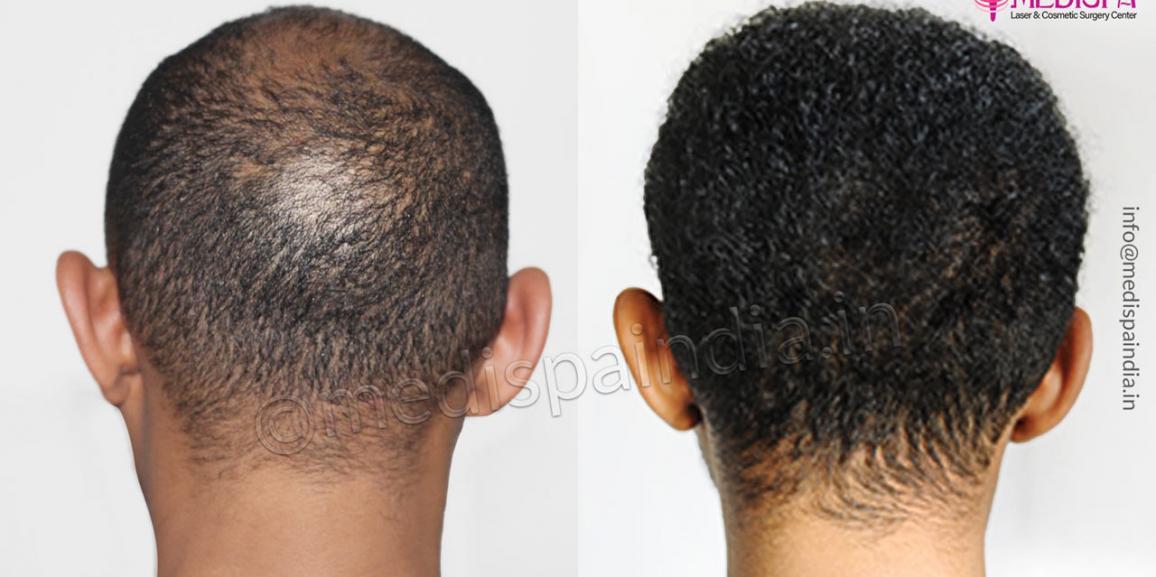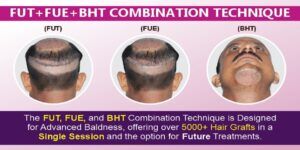
A local anesthetic is used during the elective, minimally invasive hair transplant procedure. Patients who want to see their natural hair regrow on their scalp, achieve the highest hair density possible, and still look completely natural opt for the procedure. The fundamental idea behind a hair transplant is the use of harvested hair follicles from the scalp or any other body part that are then transplanted to the desired bald area.
The donor area is selected based on the existing hair density and the requirement that the hair follicles be DHT resistant, that is, have permanent hair roots. The back and sides of the head, as well as body hairs other than scalp hair, are the most frequently used donor areas. The hair transplant surgeon, who will conduct a preliminary examination of the scalp and provide advice on the procedure’s next steps, will completely determine the donor area and the viability of the hair transplant.
Hair transplant in Jaipur is becoming increasingly popular, and patients from all over the world are visiting reputable hair transplant clinics in addition to the local populace. Due to the limited number of top-notch hair transplant surgeries performed in the city, it has gained a lot of notoriety in the hair transplant industry over time. Despite producing top-notch hair results, hair transplant cost in Jaipur is significantly lower, which makes it even more alluring for people to travel there.
Medispa hair transplant clinic is a leader in the best hair restoration procedures that are carried out in first-rate facilities. Dr. Suneet Soni is a top-tier hair transplant surgeon in the nation with unmatched artistic ability and surgical prowess. He had embraced all cutting-edge methods that allow for high density hair transplants and could potentially treat extensive high grade baldness in a single visit.
Let’s learn more about the procedures that produce the best hair transplant outcomes for severe baldness.
Norwood Classification for grading of baldness
In the advanced stages of baldness, pattern baldness, also known as androgenic alopecia, begins in either the temporal triangles or the frontal area and progresses to a larger, broader bald area, leaving only a band of hair on the sides and back of the head. The Norwood grades of baldness, which are frequently used to define and depict baldness, are explained as follows:
Class I: Entire hairline lies high on the forehead and is not actually balding.
Class II: Triangular areas of recession in the sides of frontal area and minimal recession on mid frontal area.
Class III: Borderline case. Deepening of triangular recession or can include thinning of hair on the vertex.
Class IV: Further frontal hair loss and widening of hair loss from vertex but still a wide band of hair present separating frontal and vertex hair loss.
Class V: Widening of frontal and vertex hair loss and continual breaking of separation line of hairs between frontal and vertex baldness.
Class VI: Band or bridge of hair disappear merging frontal and vertex baldness.
Class VII: A band of hair presents only in back and side of the head.
Importance of assessing the grade of baldness before hair transplant
- The numbers of needed hair grafts: The quantity of hair grafts required for the procedure depends on the degree of baldness and the amount of available hair density in the donor area. The more grafts that are required when the degree of baldness is advanced and extensive.
- Procedure cost: The cost of the procedure is unquestionably influenced by the area of baldness; the more severe the baldness, the higher the procedure cost.
- Procedure technique: The method used to perform the procedure is also determined by the area of baldness. The FUT hair transplant technique is regarded as a viable option for high density hair transplant and extensive balding stages. 3000–3500 hair grafts could be successfully harvested using this method. In cases of initial hair transplant and facial hair transplant, FUE hair transplant technique is chosen. This method could produce between 2000 and 2500 hair grafts.
- Results to be expected: Grades of baldness and the availability of hair grafts are excellent indicators of how much you can anticipate from the procedure. You might not be eligible for a high density hair transplant if your degree of baldness is severe and there are few hair follicles available in the donor area. Your hair transplant surgeon will advise you on what to expect from the procedure.
Hair transplant techniques for high grade baldness
- FUT hair transplant method: FUT hair transplant method entails removing a thin strip from the donor area, which is then dissected to harvest individual hair grafts. This method allows for the harvesting of 3000–3500 hair grafts. Therefore, in cases of extensive baldness, this technique might be preferred.
- FUT and FUE combined technique: This method involves harvesting the majority of the hair grafts using the FUT method and extracting the remaining hair grafts using the FUE method. More than 4000 hair grafts can be harvested using this method, of which 3000–3500 hair grafts can be obtained using a FUT hair transplant and roughly up to 1500 hair grafts using a FUE hair transplant.
- Combination technique of FUT, FUE, and BHT: Body hair transplantation, also known as BHT, is a procedure in which hair grafts are removed from areas of the body other than the scalp. In this method, the majority of hair grafts are extracted using the FUT technique, and the remaining hair grafts are extracted using the FUE technique with BHT. The shadow area under the chin, also known as the extraction site for hair grafts, is used for BHT. A 0.75mm punch is used to extract the hair grafts by BHT, resulting in high-quality hair graft extraction and virtually undetectable scarring.
Visit Medispa hair transplant clinic in Delhi or Jaipur for a high density hair transplant if you have higher grade baldness and want the best hair transplant possible.







